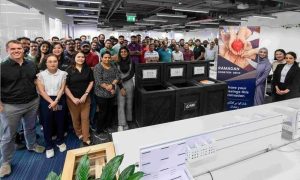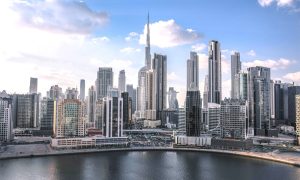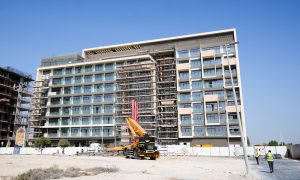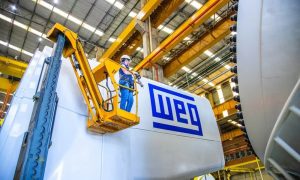UAE takes the lead on diesel
On 1 of July the Emirates National Oil Company (ENOC) announced that all the service stations in the ENOC/EPPCO network are now providing ultra low sulphur ‘Green Diesel,’ making the United Arab Emirates the first GCC state to introduce ultra low sulphur diesel (ULSD). It follows a decree from the UAE Federal Cabinet last year […]

On 1 of July the Emirates National Oil Company (ENOC) announced that all the service stations in the ENOC/EPPCO network are now providing ultra low sulphur ‘Green Diesel,’ making the United Arab Emirates the first GCC state to introduce ultra low sulphur diesel (ULSD).
It follows a decree from the UAE Federal Cabinet last year that UAE should use diesel with only 10 parts per million (ppm) sulphur, rather than diesel with 50 or 500 ppm sulphur that is in use in the rest of the GCC.
The Green Diesel corresponds with a Euro 5 standard, and the decree from the Federal Cabinet was aimed at promoting the UAE’s environmental sustainability by limiting pollution.
“Diesel is graded by its sulphur content as a general rule as removing it implies a reduction in particulate matters and pollutants.
Therefore, using 10ppm diesel leads to lower emissions, and cleaner air quality,” said Saeed Khoory, chief executive officer of ENOC.
“The Federal Government has made it mandatory that the environment-friendly Green Diesel is used by motorists, in turn contributing to a greener and cleaner environment. ENOC will continue to be at the forefront in promoting the use of Green Diesel as part of our corporate social responsibility.”
“As one of the first providers of ultralow- sulphur diesel in the UAE, we will work with all concerned stakeholders – including government departments and – to further promote its usage.”
It’s a significant development, not only from the perspective of cleaner air, but also because in the future it could allow machinery and vehicle manufacturers to import the newer, more efficient engines in use in developed markets including Europe, North America, Japan, Singapore and Australia. In those markets, the introduction of cleaner diesel was matched with the introduction of cleaner burning engines from vehicle and construction machinery manufacturers, required by legislation to meet emission targets, in order to improve the general environment and levels of public health.
In the Middle East, passenger vehicles are typically sold with a petrol engine, while for applications that require diesel, such as heavy vehicles and machinery, they are supplied as Tier 2/3 or Euro 2/3. Engines will have extra fuel filters, may lack after-exhaust treatments, and may not have the high pressure fuel injection systems which are so fuel efficient.
Could we now see vehicles with cleaner burning engines imported into the UAE?
In the short-term it seems unlikely, since from a distributor’s perspective, it’s unlikely to make good business sense to import a vehicle or machine that can only be sold into the UAE and not into the other GCC markets, and manufacturers may not have a model variant with the correct specifications on order. And with the new engines, there’s also a danger that the incorrect fuel could be used.
There’s every possibility that a customer in the UAE could purchase diesel wholesale that had higher sulphur content, or – in the case of on-road vehicles – drive to a neighbouring state, and even machinery crosses borders.
It’s more likely that distributors will change the make-up of the fleets they import once fuel qualities are aligned in all the GCC nations.
To find out by when that is likely to take place, T&FME spoke with researchers at Hart Energy Research & Consulting, international specialists in fuel quality and the firm behind the International Fuel Quality Centre (IFQC).
The IFQC provides annual rankings of countries based on the cleanliness of their diesel fuel.
Adopting low sulphur diesel for a country’s market isn’t as simple as ticking a box on an order form, quite literally it requires massive investment in fuel refinery upgrades, at a cost of hundreds of millions of dollars.
In short, a country’s ability to adopt ULSD isn’t about – in the short term – political will or consumer demand, but the ability of the petroleum refineries to produce it.
Hart Energy’s predictions are that all the other GCC nations will follow the UAE’s step, but it will take some time.
Saudi Arabia is expected to adopt ULSD in the Kingdom by 2016 under its clean fuels roadmap, but it’s expected full implementation will be more likely in the 2017-2018 timeframe.
Bahrain is expected to follow suit within a similar timeframe, at least by the end of the current decade, given how linked the fuel markets are between the two countries, not least the landbridge.
The timings of the introduction of ULSD in Oman, Kuwait and Qatar are dependent on refinery projects that are now underway. Oman’s and Qatar’s refinery projects are expected to be completed by 2016; Kuwait’s, 2018-2019.
According to researchers at Hart Energy, delayed progress of introduction of ULSD (many Gulf states previously had more ambitious timelines) is usually attributed to approval and commissioning of refinery upgrading projects.
The timeline of refinery upgrades has largely been determined by the need to supply ULSD to international markets, particularly Europe.
“While public health and the environment is a concern in the GCC, the move to implement ULSD is mainly driven by their export market demand and not domestic demand.
“As of now, there is not enough ULSDcapacity to supply domestic demand if the Middle East as a region switched its onroad transport completely to ULSD.
“Most of the countries are working on it, but we do not expect significant increase in ULSD production – and thus market penetration – before 2018-2020. While the timeline for the requirements for ULSD on the local markets has been planned with refinery upgrades in mind, the actual market switch will follow only when refinery upgrades are finished.”
In Europe, improving the fuel efficiency of diesel vehicles and engines has been a major research focus for the vehicle industry over the past 20 years, coupled there with tax breaks for diesel vehicles. Major technical improvements in fuel systems, including common rail diesel, means that diesel is commonly used for passenger vehicles in Europe, rather than mainly for heavy vehicles and machinery, as is the case in the Middle East.
But the high pressure fuel injection systems are sensitive to the presence of contaminants in the fuel, including sulphur as well as dirt, while the exhaust aftertreatments used to reduce emissions are chemically damaged by higher than 15 ppm sulfur in the fuel.
Whether buyers in the Middle East will want to buy diesel passenger vehicles remains to be seen, but Hart Energy’s researchers predict that even when ULSD is available in the region, dieselisation of the passenger fleet is not expected to happen at a significant scale.
“Most refiners will produce as much as gasoline possible to supply domestic market and produce large quantities of ULSD to supply the whole domestic demand and have significant volumes for exports, mainly to Europe. The price for ULSD obtained on international markets will then help keep domestic gasoline prices subsidised.”
With a timeline for introduction of ULSD in the GCC, the next move will be the manufacturers’. When all the markets in the region have introduced cleaner diesel, the option will be there to introduce the cleaner engines. Nevertheless, introducing a new model requires a significant investment in development and field testing – will manufacturers want to take this step?
























